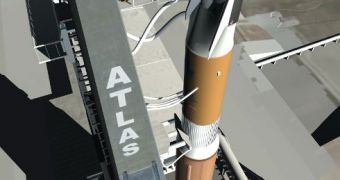Officials at the American space agency announce that one of its industry partners, the Sierra Nevada Corporation (SNC), has recently completed nose landing gear testing on its suborbital spacecraft, the Dream Chaser. The vehicle is being developed for use by NASA as well.
The corporation is currently working on its full-scale Dream Chaser engineering flight test vehicle, which is the version that will undergo all the rigorous testing the spacecraft must undergo before it is approved for production.
The space plane is being developed under a Commercial Crew Development Round 2 (CCDev2) contract NASA signed with SNC. Up to this point, the company managed to respect the deadline for all milestones agreed upon with the space agency.
Testing the nose (or forward) landing gear is an important step towards preparing the Dream Chaser for its first approach and landing test, scheduled to be conducted later this year. This gear is extremely important for safe runway landings, as well as for guiding the vehicle after touchdown occurs.
Sierra Nevada tested the rear landing gear on the Dream Chaser – the most important part of the landing system – in February. The component performed flawlessly, officials from the company say.
Once the approach and landing test is carried out, the CCDev2 partnership between NASA and SNC will be successfully concluded. It will then remain to be seen whether the two organizations will cooperate on continuing the development of the spacecraft.
“The landing gear system must perform flawlessly, just like the space shuttle orbiter's did, for the safe return of the crew. It's great to see that SNC is building on that experience while developing the Dream Chaser spacecraft,” explains the NASA CCP program manager, Ed Mango.
The vehicle Sierra Nevada is developing will be able to carry up to 7 astronauts to low-Earth orbit and the International Space Station. This is the same number of travelers as the NASA space shuttles, or the CST-100 space capsule currently under development at the Boeing Company.
“This test marks a significant point in the development of the Dream Chaser orbital crew vehicle. As the last milestone before free flight of the Dream Chaser spacecraft, we are now preparing for the approach and landing tests to be flown later this year,” Jim Voss adds.
The experts holds an appointment as the Dream Chaser project manager at SNC, and is also the vice president of space exploration systems at the company.

 14 DAY TRIAL //
14 DAY TRIAL //